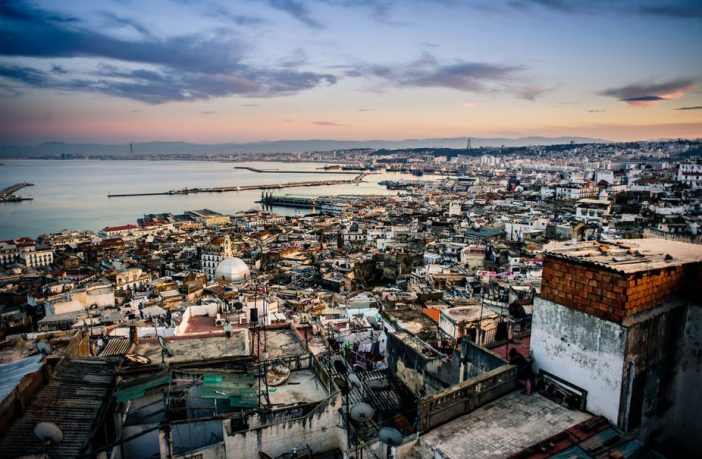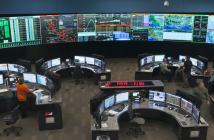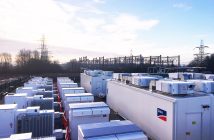Opinion
In terms of legislation, with various laws and decrees in place, Algerian authorities have long been committed to principles of sustainable development.
On the recommendations of the Rio Conference – the United Nations Conference on Environment and Development in 1992 – a High Council for the Environment and Sustainable Development was established in 1994. But it wasn’t really until 2001 – 2002, with the formulation of the National Plan of Action for the Environment and Sustainable Development, that tangible measures were set up to improve the environment and quality of urban life.
In 2006, an international ideas competition was launched to review the an urban master plan for Algiers. It clearly stated that its primary goal was to make Algiers a “sustainable city”. It was to be an exemplary project in terms of nature preservation and natural and technological risk management. Projects were therefore selected that focused on the environment.
Arte Charpentier Architects put forth the idea of making Algiers a “green metropolis” of the Mediterranean. This appealed to Algerian authorities who had long dreamed of a special status for the capital.
At a time when image and branding are playing an increasingly important role in development strategies, the big names in architecture and urban planning won the contracts. In addition to Arte Charpentier, the Urban Development Master Plan for Algiers 2035 was entrusted to the Portuguese Parque Expo company, which had contributed to re-branding Lisbon and enhanced its international attractiveness.
Seven goals for 2035
The seven goals reflect the hopes and aspirations of the contracting party, Algiers Wilaya, and for the achievement of the Strategic Development Plan:
- Positioning: Algiers, “an emblematic city”
- Socio-economy: Algiers, “driving service sector development”
- Land occupancy: Algiers, “a beautiful city in control of its growth”
- Environment: Algiers, “a garden city, green metropolis of the Mediterranean”
- Mobility: Algiers, “a city of mobility and proximity”
- Risk management: Algiers, “a safe city”
- Governance: Algiers, “a city of good governance.”
To implement these goals, a series of thematic plans were developed, defining the Master Plan strategy. The “Green Plan” involved ecosystem restoration, the “Blue Plan” addressed water resource management. The rehabilitation of the historic city centre, new amenities and housing fell under the “White Plan”. Mobility, economy and social cohesion all had plans of their own.
The Green Plan
The aim of this plan is to restore the city’s ecosystems. This would happen through the creation of “green lungs,” developing urban and agricultural parks, rehabilitating existing downtown parks and gardens, planting avenues of trees along the city’s main streets to form a green network. It would also create green cross-streets and walkways.
Some of these measures are already in place. Highways have been landscaped, numerous parks and gardens have been beautified and the Oued Smar landfill has been reconverted into a city garden. The Green Plan also considers waste management, with sanitary landfills destined to replace open-air dumps.
The Blue Plan
This plan aims to preserve and enhance the quality of water, a rare natural resource in Algeria. It lists a series of measures to improve drinking water distribution, and strategies to manage rainwater and reduce the risk of flooding. Another key objective is purification, with zero discharge in the sea. The clean-up of Wadi El Harrach and upgrading of its banks are among the flagship projects of the Algiers development plan.
The White Plan
The primary goal of this plan is to limit the failures and spatial inconsistencies caused by urban sprawl, which has exacerbated social and economic disparities and devalued the (now dilapidated) historical city center. Focusing on urban restructuring and regeneration, The White Plan proposes housing diversification to limit precarity, and identifies the facilities required to enhance the metropolitan function of the city.
The Mobility Plan
This plan is based on the macro network principle. For optimum accessibility, flagship facilities will be set up at network intersections with multi-modal transport options (metro, tramway, bus, etc.). Secondary amenities, located within neighborhoods, will be inter-accessible on foot. The central station will be relocated to El Harrach to encourage multi-modal transportation (i.e. using several modes of transport on a single journey).
Park-and-ride facilities and dedicated lanes will also be constructed. The suburban railway network will be expanded and a tram train will be put into service on available railway tracks. The metro will mostly cater to the denser downtown area of town.
Economy and social cohesion
In a globalised and highly competitive world, it is vital to raise the profile of the Algerian capital. The Master Plan suggests focusing available resources on key projects that will leverage the whole system. This will require modern infrastructures able to cater to new activities in the tourism, innovation and service sectors.
In this respect, the conversion of the port of Algiers, the Rouiba-Reghaia logistics center launched in 2018, and the Bab-Ezzouar Business Center will be key assets for the capital.
The plan also aims to promote local businesses and to improve social and territorial cohesion. It intends to heighten the attractiveness of underprivileged areas, with a real estate policy that targets potential investors and a diversified offer in terms of housing and amenities.
First tangible results
In terms of formulation and content, the Urban Development Master Plan for Algiers represents a clear break with previous urban design plans. Centered on the “sustainable development paradigm,” it focuses on various themes stemming directly from those requirements.
Certain coastal protection measures – namely the reconstruction of the coastline, heavily eroded by unregulated sand extraction and “artificialisation” – already benefit local people. They visit the new “Bayside Promenade” project daily.
Visitors who take the RN5 to Algiers can also admire the new greenway designed to convert the highway into an urban boulevard. They will also notice that the foul smells that plagued a stretch of the RN5 near Wadi El Harrach have gone, and that the banks of the wadi are being upgraded.
The extension of eco-friendly public transport such as trams and metros, and the provision of convenient park-and-ride facilities, has gone some way to fixing certain access problems and reducing downtown congestion.
Considerable efforts have clearly been made to rectify the problem of precarious housing and improve living conditions. However, in recent months, some projects have slowed down or even been put on hold because of the economic crisis currently affecting the country. Much remains to be done.
This text is one of a series of articles on the theme “Universities and Sustainable Cities,” the subject of the symposium of the Agence universitaire de la francophonie (“Francophone University Association”) that was held on 21–22 October in Dakar, with over 150 French-speaking participants (academics, governmental representatives, mayors and experts on urbanism in the French-speaking world).
Translated from the French by Sally Laruelle for Fast ForWord.
Author: Naima Chabbi-Chemrouk, Professeure d’architecture, École polytechnique d’architecture et d’urbanisme d’Alger
This article is republished from The Conversation under a Creative Commons license. Read the original article.
Disclaimer: The articles expressed in this publication are those of the authors. They do not purport to reflect the opinions or views of Green Building Africa, our staff or our advertisers. The designations employed in this publication and the presentation of material therein do not imply the expression of any opinion whatsoever on the part Green Building Africa concerning the legal status of any country, area or territory or of its authorities.











